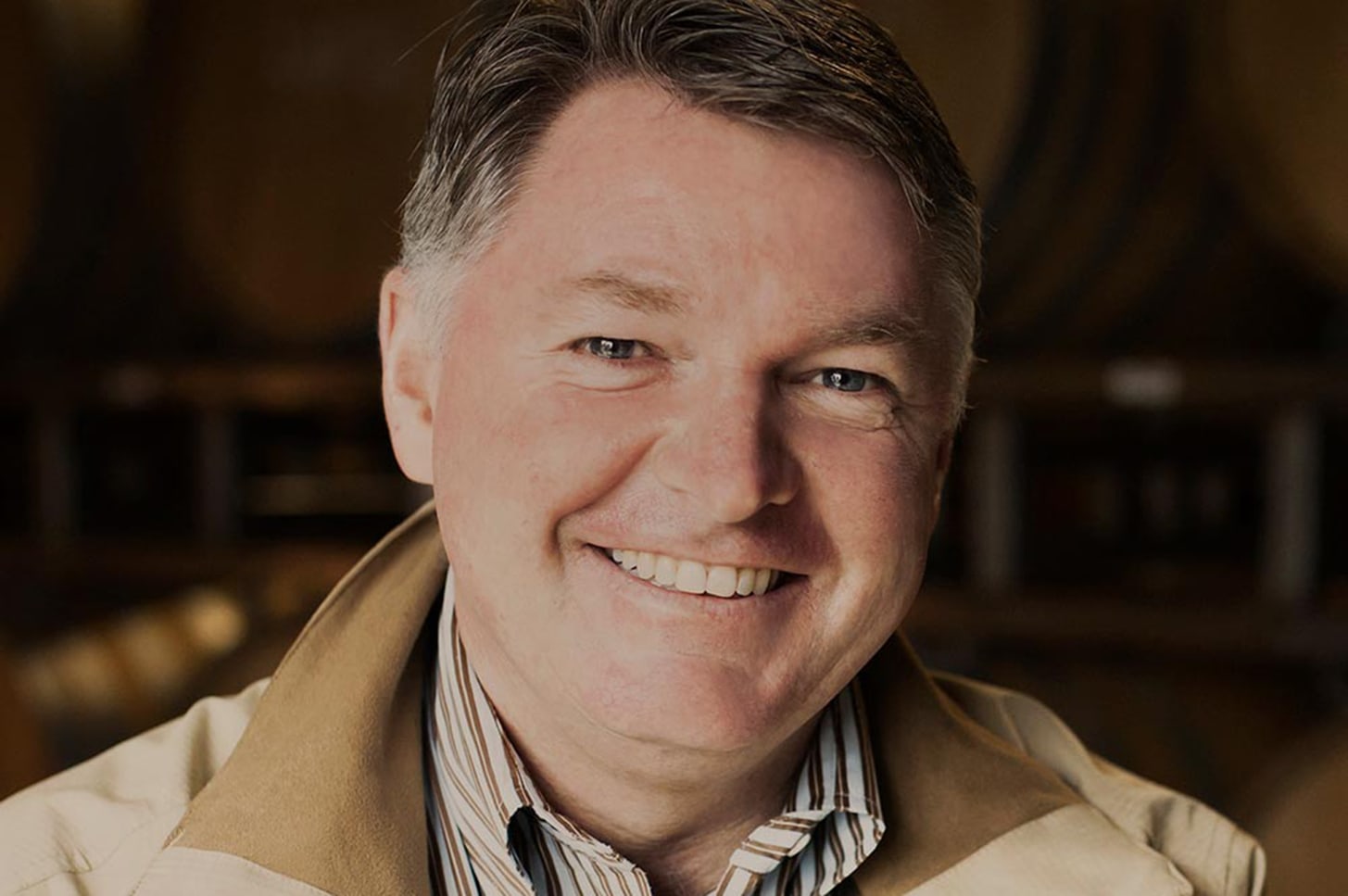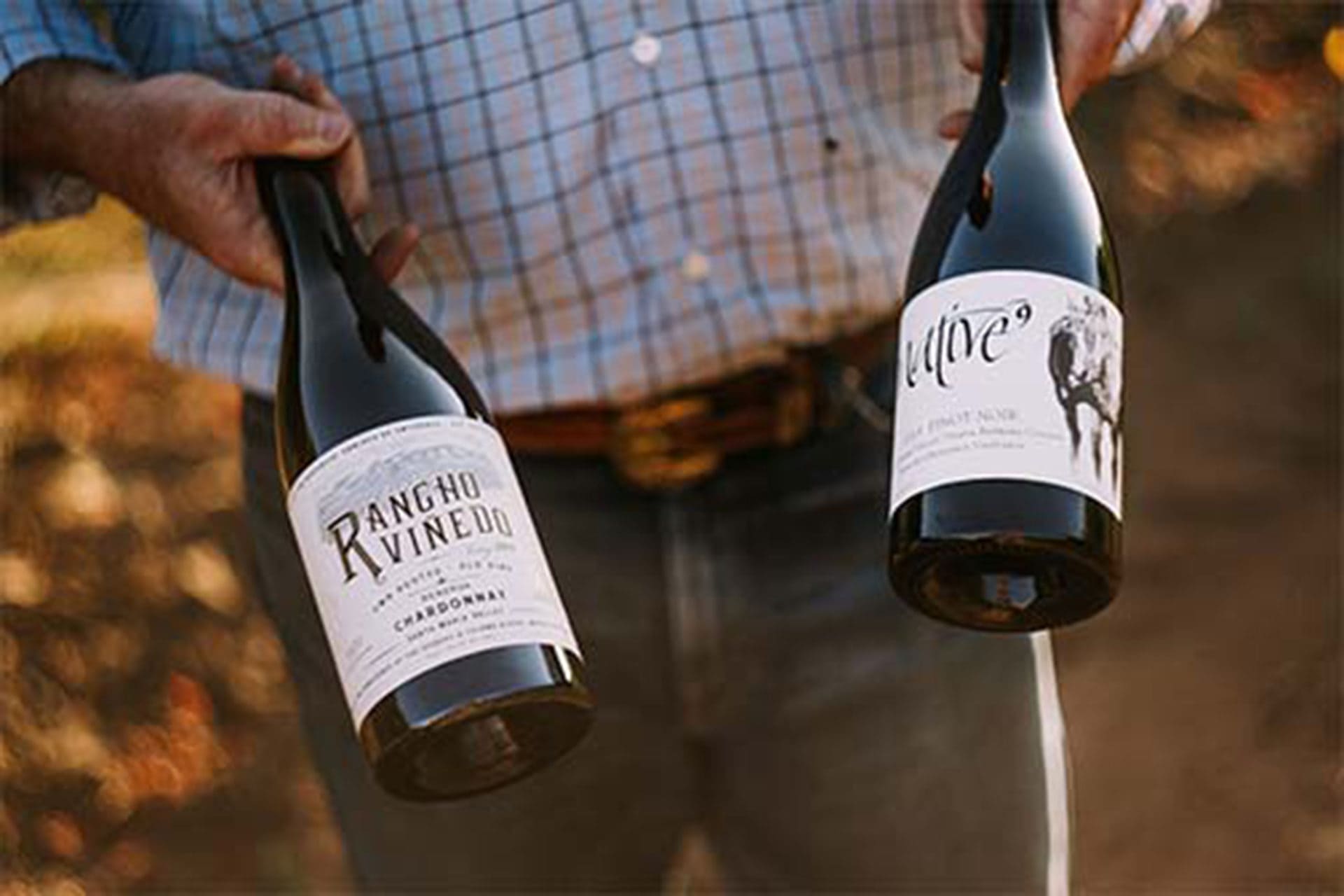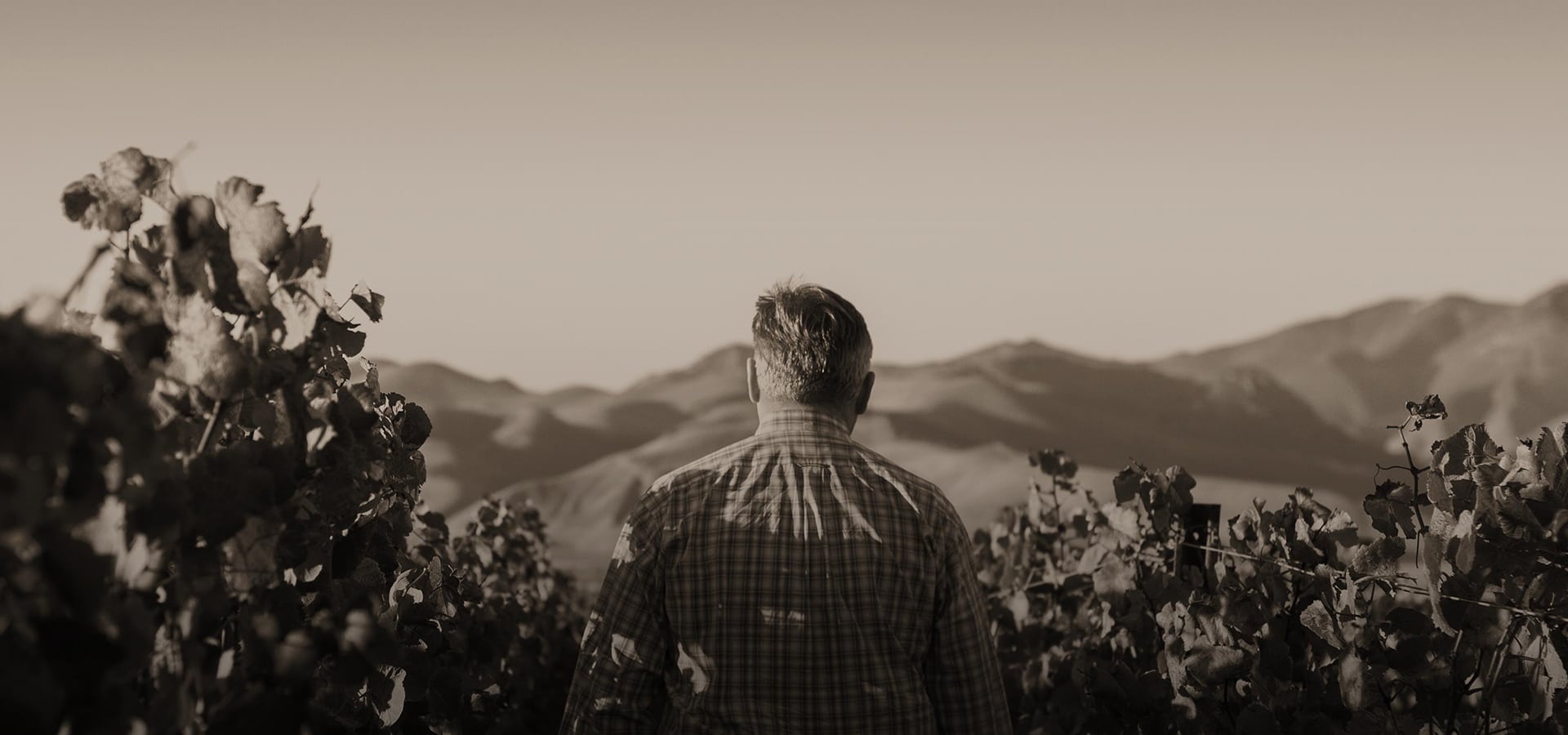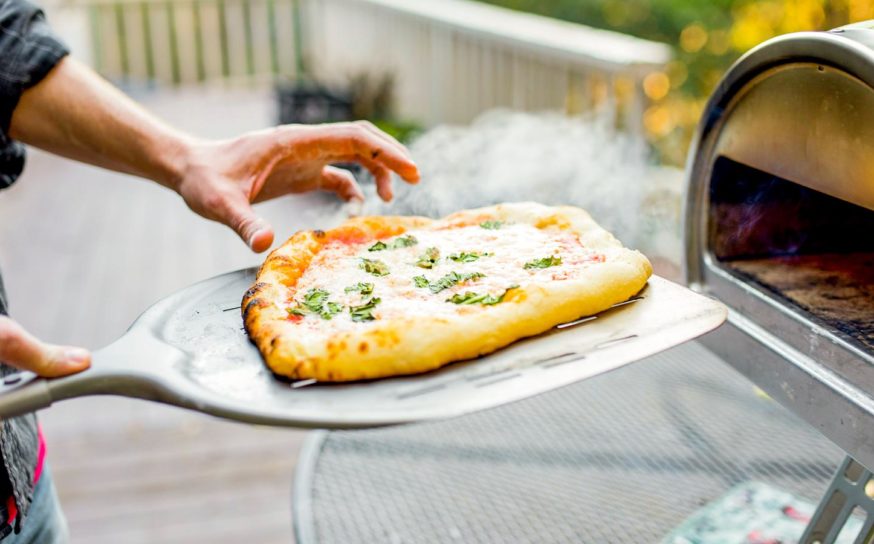At the Table with James Ontiveros
Breaking bread and pulling corks with cool people who epitomize what it means to be Californian.
-
CategoryFarm + Table, Wine + Beer
-
Written byBonnie Graves
James Ontiveros is a man who likely has dirt under his fingernails and splattered on his boots. He and his family have earned that dirt and they’re conjuring magic out of it. Ontiveros is a ninth-generation Californian and a winemaker, the kind that knows his little corner of the earth intimately.
His family history begins in 1781, during the Revolutionary War, when Josef Ontiveros rode into “Alta” California as part of the seminal Rivera expedition. The Ontiveros family became ranchers and farmers in the Santa Maria Valley, and it’s the historicity of the farming that makes James’ wines so unique. The modern American wine industry is sometimes tied to André Tchelistcheff’s arrival at Beaulieu Vineyards in Napa in 1938. While Tchelistcheff’s impact in northern California is undeniable, the Ontiveros family of Santa Barbara County already had an intimate knowledge of their own land that in many ways can be described as “generational terroir,” a site-specific, intuitive familiarity that cannot be taught. It can only be absorbed.
Simply put, James is hardwired to make amazing wine. Currently, he and his family are producing two labels—the Native 9 wines, which debuted in 2003, and the newer Rancho Viñedo wines from 2014. Native 9 is produced from the vines that James planted in 1997, and are an amalgam of eight clones of pinot noir, which is farmed organically. Made with minimal irrigation and hand-harvested with care, Native 9 is the antithesis of mass-marketed, anonymous pinot noirs. It’s a wine of place. Similarly, the Rancho Viñedo wines are made from vines planted in 1973, and these pinot noirs and chardonnays beautifully reflect the unique climate of the Santa Maria Valley.
Recently, we talked to James about his family’s roots, his own career evolution and what really makes Santa Maria tri-tip so special.

Golden State: As a ninth generation Californian yourself, how would you define the term? What makes someone a true Californian?
James Ontiveros: For me being a Californian is a mindset and an address. Having settled here in 1781, my family has been here through the rule of three different countries at this point! Having appreciation of this place—its magic, its beauty, resources, potential and mindset. Being so energized by it, that you’re willing to make sacrifices to be here, and to be a part of it all.
GS: Tell us a little bit about your evolution from rancher to Cal-Poly student to vineyard manager to winemaker.
JO: Growing up on our family’s small coastal ranch, we raised cows and calves, and farmed grain hay. I loved ranching, and was competitive in Rodeo, so I went to Cal-Poly SLO initially as an Animal Sciences student and to compete with the Rodeo team. While I was a student there, I realized that I wanted to learn more about farming, in the hopes that it could improve our financial prospects on the ranch more than the cattle business. Vineyards thus became my focus. I enjoyed the similar annual seasonal cycles though. Cows have only one calf per year. Vineyards also have only one harvest per year. On our ranch and on this part of the coast, we calve in the fall months, the same time that we are finishing harvesting wine grapes.
Being outdoors, working each stage of the annual process, marking it by each season—that had a real attraction for me. I switched my major from Animal Sciences to Fruit Sciences with an emphasis in vineyards. By my third year of studying viticulture, I took a seasonal full-time job with Kendall Jackson in their grower relations department, and started to prepare planting my first vineyard on our own ranch. Very shortly after getting into the vineyard side, I wanted to make wine to further understand the entire cycle. I planted my first vineyard in 1997, and also made my first wine—a Merlot from Paso Robles’ fruit.
I’ve been doing an annual practice of all those things since. I now only make wine from Estate vineyards that I also farm in Santa Barbara County. But the wine business is taking me all over the world again and again, and I couldn’t be more thankful to keep all of these elements in my life.

GS: How would you best describe the terroir of your little piece of the wine world? How do Ranchos de Ontiveros reflect the broader appellation of Santa Maria?
JO: Santa Maria is a great place for high-quality wine grapes, albeit oftentimes with very low yields. It’s been said again and again that our east-west running mountain ranges are entirely unique on the West Coast; they funnel cold Pacific winds off the ocean, which creates a cold, subtropical climate, allowing for the longest growing season from bud-break to harvest across all of California. This matters in that we get fruit that is physiologically mature, well before it is sugar-ripe. Pinot noirs that express savory, spicy elements are common here. I’ve chosen to take advantage of this by also using whole cluster fermentation, which emphasizes that savory, mouth-coating texture.
The Pinot Noir for my Native 9 label is exclusively from Rancho Ontiveros. It is on a high elevation plateau, with winds direct off the Pacific that can sometimes be very unpleasant. I farm shallow ocean sediments that have been pushed up to that high elevation from all the seismic activity of plate shifting. The soils are naturally devoid of organic matter, and extremely limited nutritionally. This has caused me to rely on fertility largely from compost to help build the soil’s tilth and fertility, and to switch to organic farming almost 10 years ago. Due to the low vigor of the site, we planted a relatively high density allowing for fewer pounds per vine, but more vines per acre. With an average of roughly 1,000 vines per acre, our average yield over the last 20 years still falls below two tons per acre.
My other estate vineyard Rancho Viñedo is only 3 1/2 miles away to the north and slightly east. It sits directly across the street from Bien Nacido Vineyard, where I spent over 10 years of my career managing their grapes sales and marketing efforts. This is a much stronger site in terms of soils, and it tends to be a bit warmer because it’s not so inundated by coastal wind. The benefit of 45-year-old, own-rooted Wente clone 72 Chardonnay is the added element here that makes this site so phenomenal. Planted in ’73, the planting density per acre is roughly half of what we have at Rancho Ontiveros. With similar low yields at two to three tons per acre, the fruit is expensive, but the quality makes up for it in the bottle.

GS: Lately, it seems like more and more wineries are founded by people who found success in other industries, for example, technology. What advice would you give to aspiring winemakers who may not have millions of dollars at their disposal?
JO: Figure out what wines you love, and buy them. Build a beautiful, terrific cellar and share it with friends. This is still agriculture, and unless you’re willing to engage in the day-to-day risk and frustration of farming, enjoy the beauty of wine without the agricultural investment!
GS: If we sat down together at your table (and I hope we do soon), what bottle would you open up and what would you cook?
JO: If I was so fortunate to have you as a guest for dinner, I would share with you my collection of old maps, and show you some really cool rocks! Regarding wine, I would want to open up a few bottles for sure and include a local benchmark wine, maybe an older vintage of an Au Bon Climat to show how beautifully they develop with age. Maybe something that we share an international love for. Your pick! And I’d like to share with you something I have personally made recently, like my new sparkling wines or some Rancho Viñedo chardonnay.
For food, I would be proud to share the trademark hospitality of the Santa Maria Valley. Grilling meats over red oak coals, a linguiça appetizer, a great fresh local green salad, a loaf of French bread—always center-sliced, toasted on the grill and quickly dipped in butter—with local favorite pinquito beans and fresh, homemade salsa. This is authentic Santa Maria style tri-tip!
Get the Latest Stories





